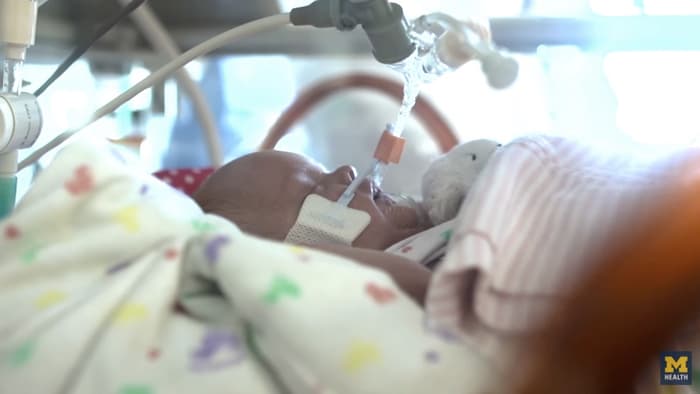
The university has just reported that such an external placenta has kept five extremely premature lambs alive for a week. Although clinical trials are yet to be scheduled for humans, the researchers are hopeful that the technology might one day become a viable way to keep the earliest born babies alive until they can develop on their own.
"We thought, 'Why don't we solve the problem of prematurity by re-creating the intrauterine environment?'" says principal investigator George Mychaliska, the director of UM Fetal Diagnosis and Treatment Center. "Maybe we should treat this tiny baby like a fetus. Maybe we should treat these babies as if they are still in the womb. This is a complete paradigm shift. Our research is still in a very preliminary stage, but we've passed a significant milestone that gives us promise of revolutionizing the treatment of prematurity."
The artificial placenta works by using an extracorporeal membrane oxidation (ECMO) system in which an external pump, or artificial lung, oxygenates the blood directly and bypasses the lungs. While ECMO has been around awhile, the researchers altered it in this case to serve very premature infants.
The researchers now plan to spend the next five years showing how their artificial placenta can take an extremely newborn lamb all the way to normal newborn physiology. If they can achieve that, the next step will be applying for preliminary trials involving human infants born very early. They've received a US$2.7 million grant to accelerate the research.
This university video from December will let you hear more about the project from the researchers, including UM's Robert Bartlett who's known as the "father of ECMO" for having developed that technology.

 Previous page
Previous page Back to top
Back to top







